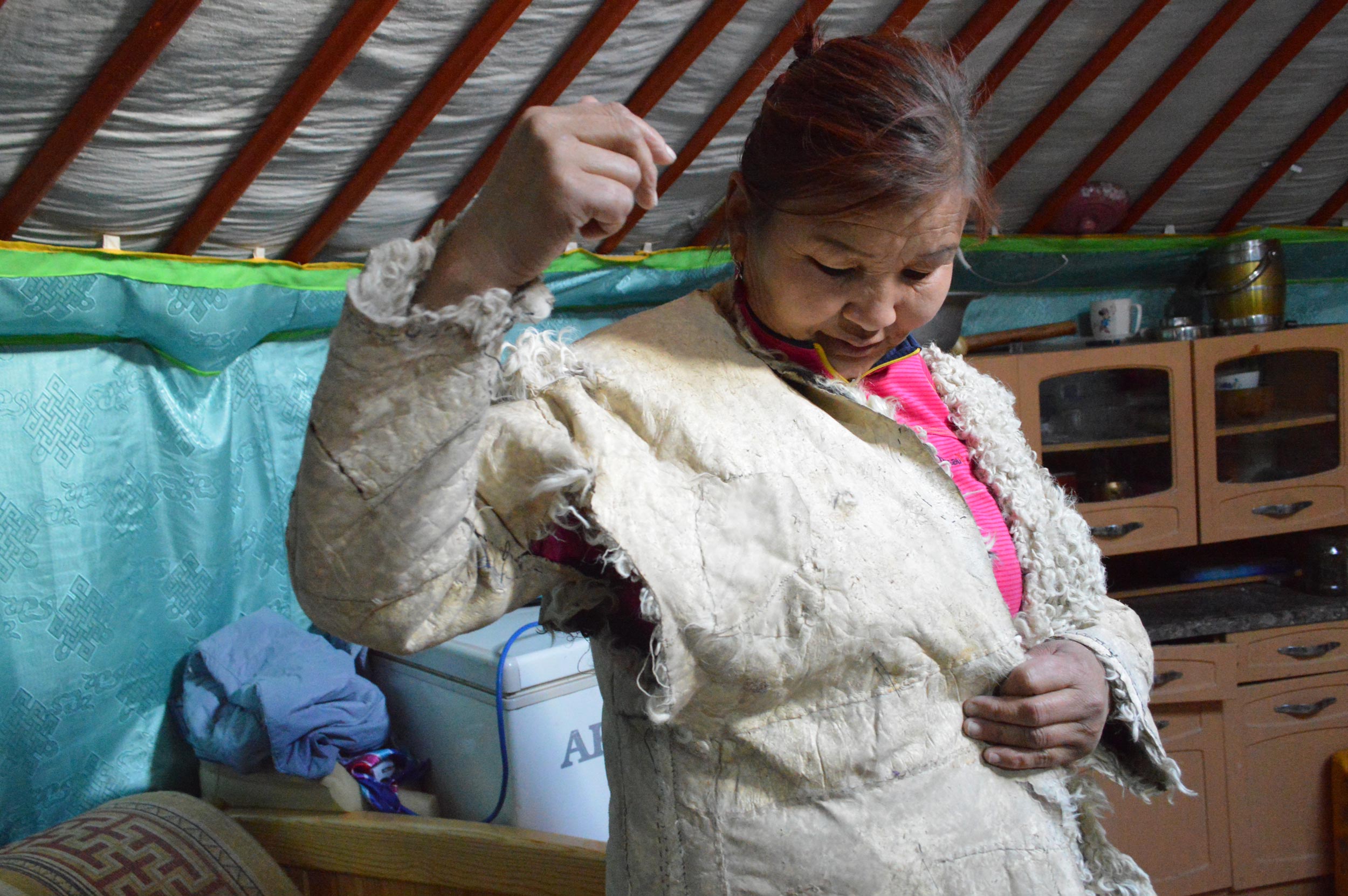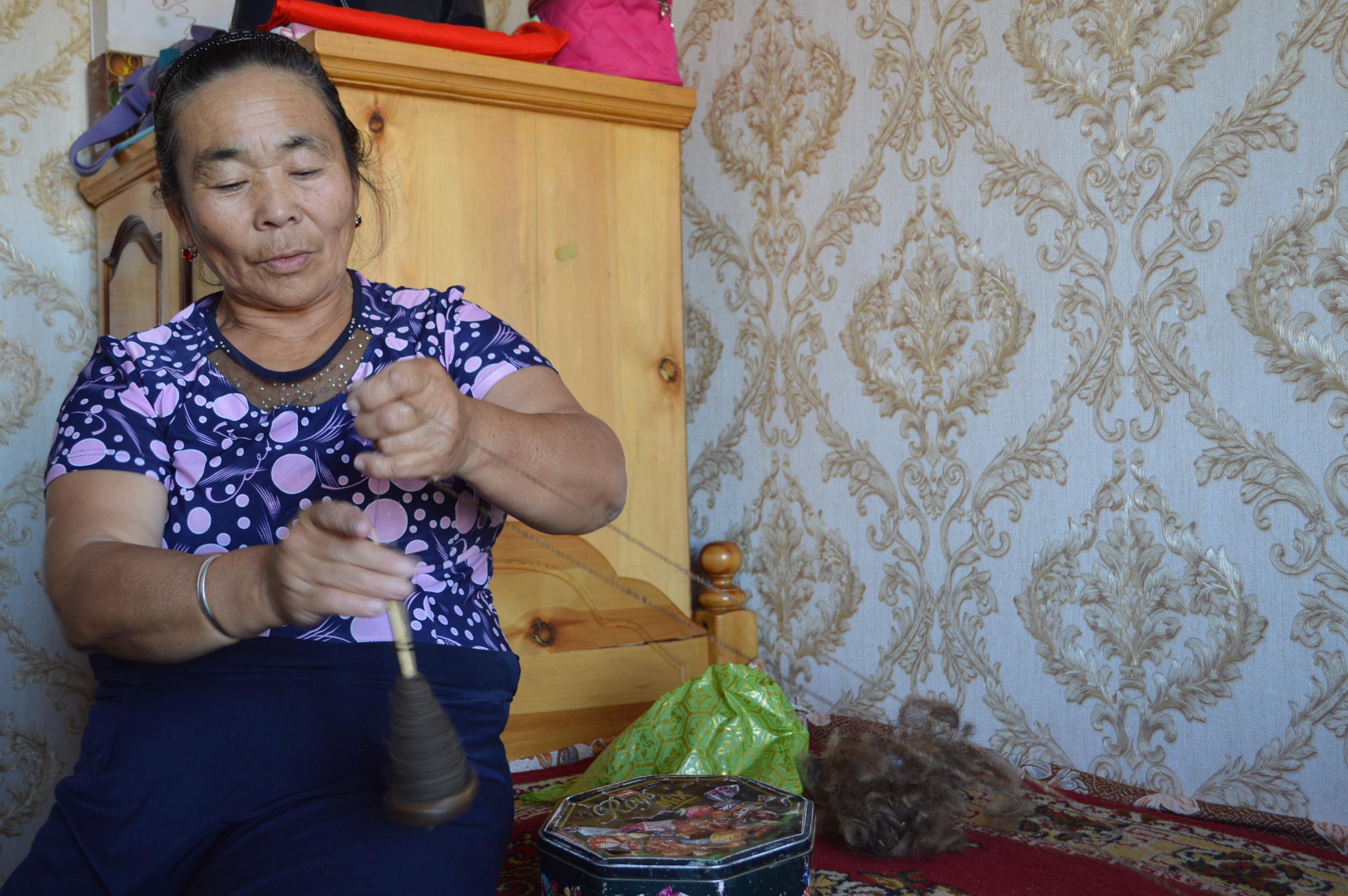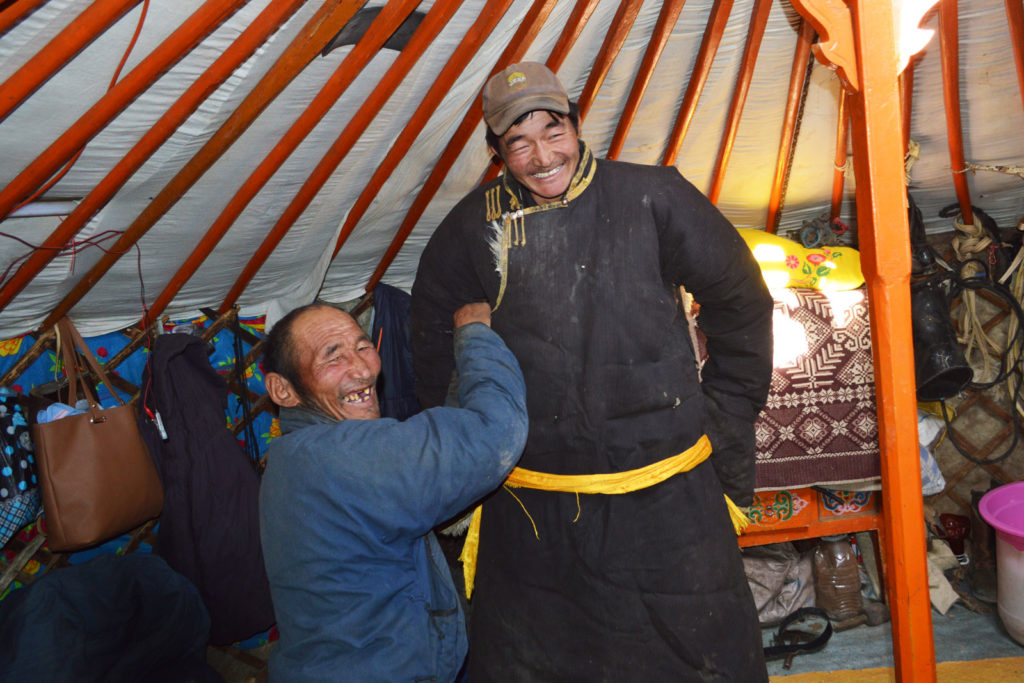Mongolia Field Note #14 ‣ Author: Kristen Pearson
Background
Mongolia is one of the few places in the world with environmental conditions favorable to the long-term preservation of organic materials, such as textile, leather, and wood. Organic assemblages from as early as the Iron Age have been uncovered in dry and/or frozen contexts, reflecting ancient lifeways that were very much reliant on domestic and wild animals not only for food, but also for clothing, containers, tools, and household furnishings. Today, Mongolian herders continue to rely on animals to supply the raw materials for traditional crafts. By studying these contemporary craft practices and their (archaeologically detectable) material manifestations—a method known as ‘ethnoarchaeology’—I aim to construct an interpretive framework for the organic archaeological record.
Research Plan
In order to examine craft production in different cultural and ecological contexts, I chose to split my project into two phases. Phase I took me from the Gobi, to the steppe, to the Khangai, passing through five central-Mongolian aimags in two weeks. Next, I headed to Western Mongolia by bus for two weeks of interviews with Kazakh families in the Altai. All together, I conducted more than 30 interviews, collected fiber samples representing a range of wild and domestic animals, and recorded detailed object histories with direct applicability to the analysis of archaeological materials. The ACMS provided invaluable logistical assistance, connecting me with a translator for Phase I and helping me plan my budget.

Findings
ACCESS TO RESOURCES: This project successfully demonstrated the applicability of ethnoarchaeological methods to the study of hide and fiber crafts. Hide and fur garments proved to be particularly rich indicators of social and economic circumstance. Across field sites, patterns emerged in the way people related the physical, observable qualities of hide garments to the underlying social factors surrounding their production. For sheepskin garments, the timing of slaughter was one of the most important variables, as it determines the length of the wool on the hide. Sheep slaughtered more than ten days apart have wool of significantly different length, such that their hides do not “match” for the purpose of making a sheepskin garment. Garments made from mismatched hides were described as lower quality, reflecting restricted access to resources at the time of production.
The use of lower-value hide elements was frequently associated with lower status within the family, i.e., children in general—and the youngest child in particular—frequently had clothes made from the “leftovers” of processed hides. One case was also observed where a wife had a garment made from lower-value elements (wolf paws) when her husband had a coat made from the higher value elements of the same individual animals (wolf body skins). That said, the gender dynamics of resource distribution were less clear and consistent than the dynamics of birth order/age.
USEWEAR/OCCUPATIONAL MARKERS: Bioarchaeologists use markers of occupational stress on the human skeleton to identify the activities of ancient people; similarly, archaeologists study usewear on artifacts to determine whether and how people used them. My project aimed to examine whether the concepts of occupational stress and usewear might be productively combined in the analysis of archaeological garments.
I found that non-specific usewear could be used to “age” a garment, in the way that tooth wear in a specific ecological and cultural context can be used to age mature skeletons. Skin garments, which are more durable, begin to show signs of wear after about 10 years of repeat seasonal use. Fabric deel, on the other hand, show signs of wear within the first year and are replaced within three years. Ideally, families produce at least one new deel for each family member each year, and so individuals tend to have multiple deel at various stages of wear “in rotation” at any one time.
I was able to identify occupation-specific use wear related to a few important pastoralist activities. Horse riding and dairying produce the most distinctive patterns—wear on the back edge and staining on the lap, respectively.

FUTURE DIRECTIONS: I presented initial findings at an ACMS speaker series event at the American Corner and at a workshop in Bonn, Germany. I am currently preparing a scholarly article presenting the full results with archaeological case studies.
Acknowledgements
Thank you to Javzandulam (“Oko”), Uugan, and Mairash for their hard work and support in the field and to Byambaa for coming with me all the way to Bayan Ölgii and back! Thank you to the individuals and families who welcomed me into their homes, answered my questions, and offered their insights. This project was funded by an ACMS Summer Field Research Fellowship and a Fulbright U.S. Student Research Grant.

Great work!
Very interesting. Thank you for sharing your research.
Wow, very interesting. Thank you.